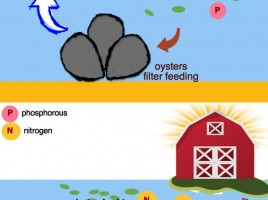
Ocean Acidification
Ocean acidification is the term used to describe the decrease in saturation of carbonate ions in the ocean. Increased atmospheric carbon dioxide, from the human combustion of fossil fuels, dissolves in the ocean. Chemical reactions occur that decrease the pH of the ocean and concentration of carbonate ions. Carbon dioxide …


